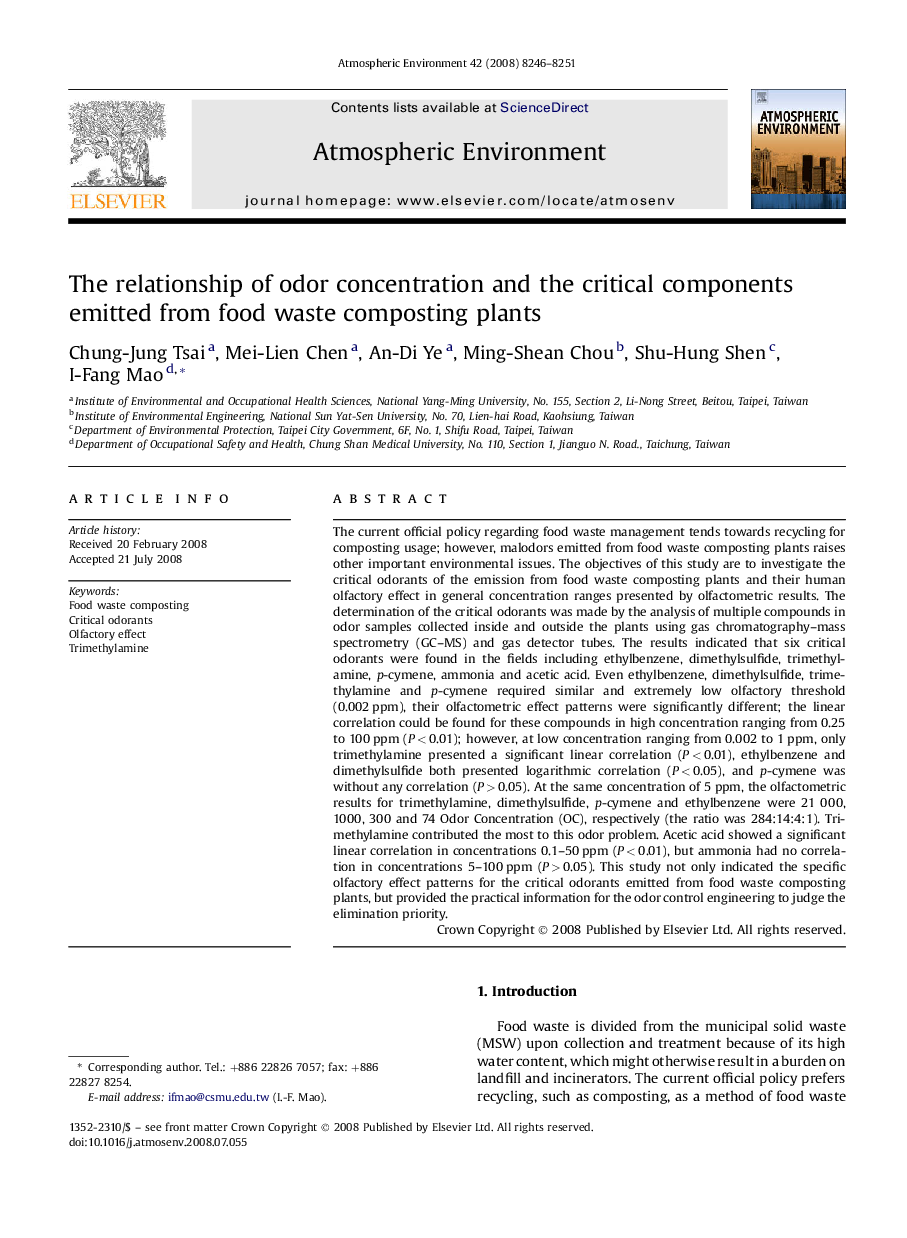| کد مقاله | کد نشریه | سال انتشار | مقاله انگلیسی | نسخه تمام متن |
|---|---|---|---|---|
| 4442039 | 1311134 | 2008 | 6 صفحه PDF | دانلود رایگان |

The current official policy regarding food waste management tends towards recycling for composting usage; however, malodors emitted from food waste composting plants raises other important environmental issues. The objectives of this study are to investigate the critical odorants of the emission from food waste composting plants and their human olfactory effect in general concentration ranges presented by olfactometric results. The determination of the critical odorants was made by the analysis of multiple compounds in odor samples collected inside and outside the plants using gas chromatography–mass spectrometry (GC–MS) and gas detector tubes. The results indicated that six critical odorants were found in the fields including ethylbenzene, dimethylsulfide, trimethylamine, p-cymene, ammonia and acetic acid. Even ethylbenzene, dimethylsulfide, trimethylamine and p-cymene required similar and extremely low olfactory threshold (0.002 ppm), their olfactometric effect patterns were significantly different; the linear correlation could be found for these compounds in high concentration ranging from 0.25 to 100 ppm (P < 0.01); however, at low concentration ranging from 0.002 to 1 ppm, only trimethylamine presented a significant linear correlation (P < 0.01), ethylbenzene and dimethylsulfide both presented logarithmic correlation (P < 0.05), and p-cymene was without any correlation (P > 0.05). At the same concentration of 5 ppm, the olfactometric results for trimethylamine, dimethylsulfide, p-cymene and ethylbenzene were 21 000, 1000, 300 and 74 Odor Concentration (OC), respectively (the ratio was 284:14:4:1). Trimethylamine contributed the most to this odor problem. Acetic acid showed a significant linear correlation in concentrations 0.1–50 ppm (P < 0.01), but ammonia had no correlation in concentrations 5–100 ppm (P > 0.05). This study not only indicated the specific olfactory effect patterns for the critical odorants emitted from food waste composting plants, but provided the practical information for the odor control engineering to judge the elimination priority.
Journal: Atmospheric Environment - Volume 42, Issue 35, November 2008, Pages 8246–8251